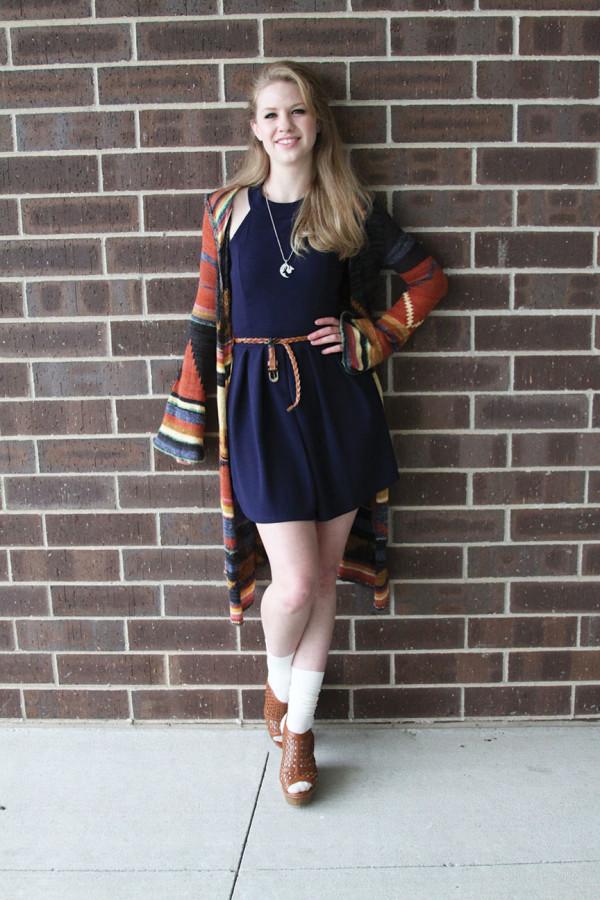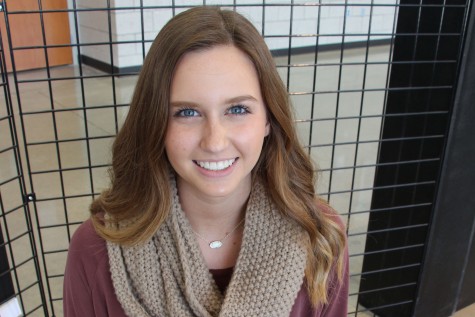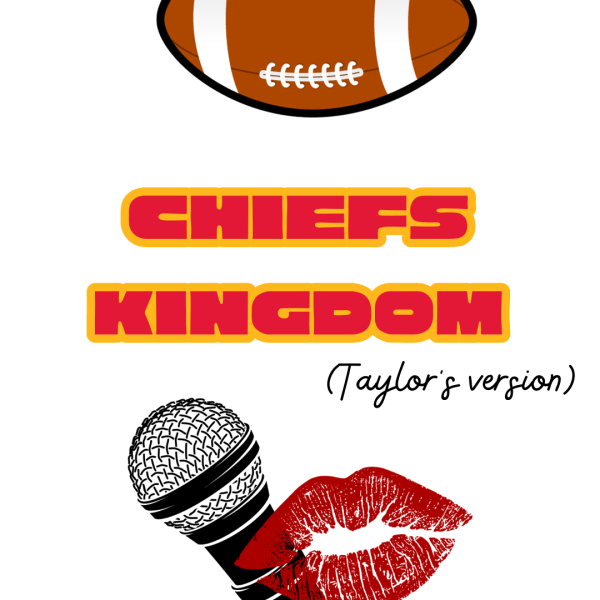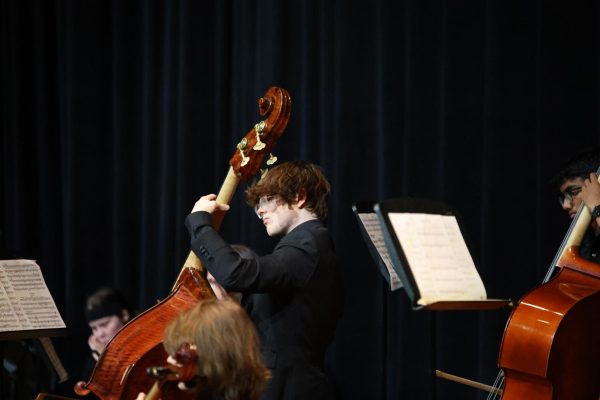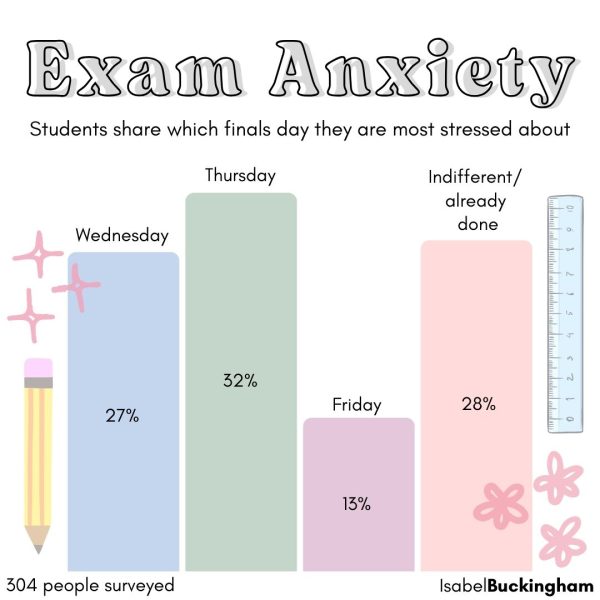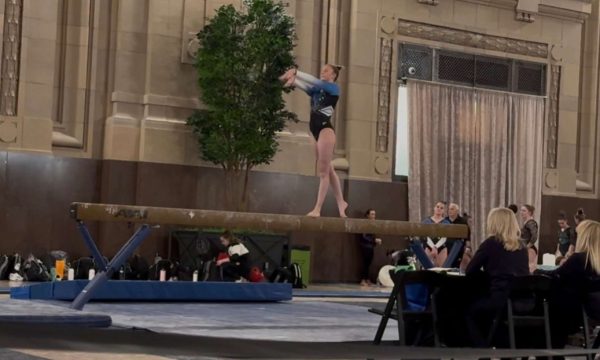Students express personal style through reoccuring trends
She usually strays away from normal stores because it’s hard for her to find clothes that have personality there. Her favorite store is a warehouse of damaged clothing. She never goes there with the intention of finding anything specific; she just scrolls through the racks until something stands out. A great solid color tee or a denim vest excites her; the possibilities from there are endless. She also thrifts at antique stores and finds the clothing sections tucked in the corners. She believes clothing should be fun to acquire and wear, always.
“People don’t inspire my clothes — feelings and events do,” junior Lauren Browning said. “Sometimes I wake up and I want to feel like I can take on the world, so I roll up the sleeves on a blazer and throw it on over my favorite tee. Other days I’m sick of the 21st century and feel like dressing from the ‘50s. I don’t use blogs, Tumblr or Pinterest for inspiration because it feels too forced for me.”
Browning tends to shy away from what seems to be “in” for most teens, whether that be via social media or from what she observes in the halls of school. However, trends — especially from past decades — ultimately influence her personal style.
Trends are constantly being recycled throughout time periods. The latest trends of 2015 can be compared to distinguished looks that were popular in previous generations.
“Trends cycle through,” Browning said. “When something is new and bold, people are all over it. But eventually, it becomes typical and people get bored. Once it has been out of style long enough to be “vintage,” people will be all over it again. People don’t realize how vastly our clothes are impacted by fashion of other centuries. It’s pretty easy to see the patterns from the ‘20s on, but even the necklines, hairstyles and patterns of the early 1900s are influencing clothes today.”
Rummaging through a parent’s closet to look for clothes from previous decades or going thrifting has become a common method of shopping. For senior Elise Pierce, this is the only way she finds her favorite pieces of clothes.
“I hate shopping,” Pierce said. “Most of my clothes come from other places. For example, my favorite flannel belonged to my grandfather before it was mine, and my big cozy sweaters usually come from my dad’s closet. My most comfortable pair of jeans are three sizes too big and were my mom’s when she was in college. Those are the things that I like the most.”
Aside from new methods of thrifting, the time period itself also inspires fashion choices. For Browning, this is the ‘40s and ‘70s specifically. Browning says her style doesn’t pertain to a normal category like “edgy” or “bohemian” because she changes her mind every day. She describes her style as adaptable and unique, yet classic and traditional.
“Last year, I fell in love with neck scarves and went thrifting all the time,” Browning said.
“I now own about a dozen neck scarves or head scarves. Sometimes when I don’t want to completely dress from the past, I will tie one in my pony tail, as a headband, or around a purse strap. The ‘70s are my go-to inspiration for warm-weather clothes. Last year, I went through my mom’s cedar chest and took all her shirts from elementary school; I wear them as ‘crop tops’ with high waisted skirts or flare jeans. If I’m really digging the oldies, I throw on my moccasins and heart shades and pretend I wasn’t born in ‘97.”
Culture impacts aspects of determining personal style. Senior Romaric Keuwo would describe his style as “African meets hipster.” He says he loves his Cameroonian culture, but he also loves the hipster trend. For that reason, he wears a combination of both.
“My style portrays the classic ‘90s style with a little modern twist,” Keuwo said. “I have a thing for jean jackets — both long sleeve and cut. I also really like rolling up my pants and color coordinating. And sometimes I need an over-sized sweater just to remind people what decade I was born in. I think the majority of my outfits are just a combination of modern and ‘90s style.”
Not only is style is inspired by trends from the past, but it is also influenced by the present. Social media as well as advertising are on the rise for shaping personal style. The more the media covers a particular style, the more popular it becomes. When the media covers a trend, it spreads faster to teenagers who are still attempting to figure out their sense of style.
“I think high school trends are largely impacted by environment and what is available and considered popular,” Browning said. “Sometimes trends start because someone made a bold choice and the other kids decided to follow. Usually though, trends emerge in high school as an attempt to replicate the runway looks in a safe way. Once all the mall windows are decked out with the latest trend, everyone assumes that is what is cute, and thus the trend cycle is born.”
Although trends impact fashion choices, personal style is used to express originality. Trends are used to guide style choices, but as Browning, Pierce and Keuwo would suggest, style has to be authentic. Personal style is not only impacted by different cultures and time periods, but instead is a combination of both. Trends are constantly being recycled but it’s what a person does with the trend that shows his or her individuality.
“I love the diversity at Southwest,” Pierce said. “It’s hard to say that there are specific trends because I think most people embrace their individuality pretty comfortably. The most important thing is to choose styles that make you comfortable and fit your personality. There’s no such thing as having a ‘wrong’ style, as long as it’s what makes you feel good. Sometimes you have to stop and ask yourself if you like it because it suits your personality or if you only like it because society tells you to.”


